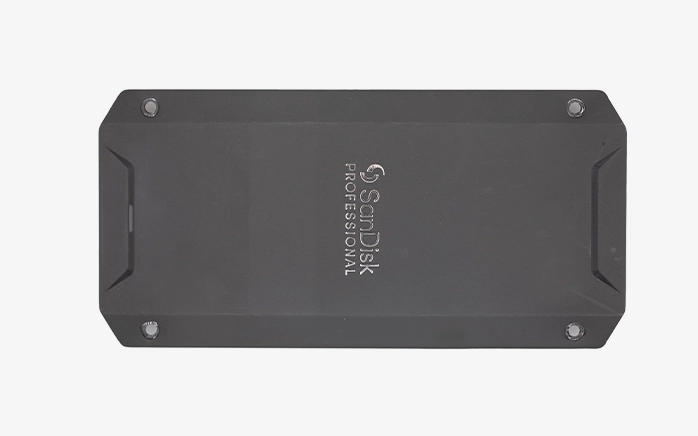Western Digital is one of the leading manufacturers of storage devices available on the market. We love working with WD hard drives, NAS devices, and other WD products just because of their build and quality. The products of this brand are well made and last longer than the other ones.
As with any other technology, wear and long-term usage affect Western Digital (WD) products, damaging the media. Eventually, we still receive many failed hard drives, SSD drives, flash drives from this manufacturer to recover data. The devices fail due to many different reasons, including physical, logical, and mechanical damages.
In today’s blog, we want to write about a Western Digital My Book Thunderbolt Duo NAS device with hard drive mechanical failure.

WD My Book RAID 0 Recovery
The device fell off the table while moving the Apple MacBook Pro connected over a thunderbolt cable to this device. This device consists of 2 Western Digital hard drives installed and configured as a RAID 0 array.
This type of RAID level increases the data reading/writing speed, and it does not provide redundancy in case of any hard drive member failure. RAID 0 is also called striping as it writes user data in blocks and sequence to the member hard drives.
The block size differs by the RAID controllers. The most common block size is 128 sectors, and there is no parity data in this RAID type. Thus, it does not provide any redundancy in case of any hard disk member fails. The RAID array will be inaccessible if there is any problem with member hard drives.
A mainboard installed in WD My Book Duo has a software RAID controller and Linux operating system that manages the RAID 0 logical volume. Therefore, the failure of this mainboard and operating system is less likely and rare.
Evaluation of Hard Disk Drives
In this case, the device fell on the floor while the hard drives spun, leading to mechanical failure. So as data recovery engineers, we always ask customers what happened to the devices before we do any actions.
For starting the RAID 0 Data Recovery process, We opened these hard drives in the cleanroom and removed the magnetic head assembly to inspect them under the microscope. While checking under the microscope, we observed that all the head sliders were bent, but the surfaces were in good condition.
Powering the hard drives using the original head assemblies was not possible. If we do so, the broken heads will scrape the surfaces leading to negative results.

Hard Drive Repair Process
The case was complicated because we needed to recover both hard drives to build RAID 0 logical volume to retrieve the lost data. So we found two compatible Western Digital external hard drives, changed the heads using precision head replacement tools.
After changing broken heads with new spare heads, we could power the hard drives successfully. We had access to the data despite the fact that hard drives did not have stable working conditions with new heads.
The cloning process took about 24 hours, and the speed was not good. But we had enough time to recover data. The customer requested 1-2 weeks turnaround service option.
Rebuilding RAID Image
We could successfully read the hard drive data from both devices and save it in two separate binary files. Thus, analyzing content and building image on binary files gives us a secure and reliable environment for the data recovery process.
We analyzed the raw content on both image files using data recovery software to find stripe block size and hard drive sequence.
After seeing all necessary parameters, we could build the RAID 0 logical volume and access the files on the ext Linux file system. We recovered all critical files and checked their integrity by using special software.
After being assured that all files worked fine, we shipped the data to the customer in an encrypted hard drive. This way, the case was successfully closed, and the client was happy to receive his files recovered.
Frequently Asked Questions
What are the common signs of RAID 0 array failure in the WD My Book Thunderbolt Duo?
Signs of RAID 0 array failure can include data access errors, unusual noises from the drives, or the device not powering on. If you notice any of these symptoms, it’s essential to take immediate action.
Can I recover data from a failed RAID 0 array in the WD My Book Thunderbolt Duo on my own?
Attempting DIY recovery is risky and can lead to further data loss. We highly recommend contacting a professional data recovery service like PITS Global to assess and recover your data safely.
How long does the data recovery process take?
The recovery time varies based on the complexity of the issue. We strive to complete the process as quickly as possible while ensuring the best results. We’ll provide you with an estimated timeframe during the assessment.
Can I prevent RAID 0 array failures in the future?
RAID 0 has no built-in redundancy, so it’s essential to regularly back up your data. Consider other RAID configurations, like RAID 1 or RAID 5, which offer better data protection. Regularly update your WD My Book Thunderbolt Duo firmware and keep an eye on drive health using manufacturer-provided tools.


